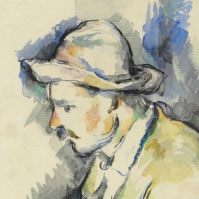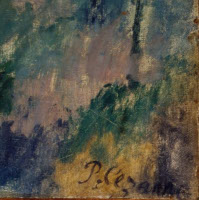Question: What's so special about this painting?
Answer: A lost study for this painting has been found.
As with many of his still life paintings, Cézanne broke down his figures into basic geometrical forms. He felt that everything in life consisted of the basic forms of a cylinder, sphere and cone. Like the Impressionists, Cézanne wanted his brushstrokes to be visible to the viewer, so he frequently used a palette knife instead of a brush. He was well known for using these flat brushstrokes and adding light and dark tones later for contrast and depth. These flat strokes were usually of primary colors, which he mixed on his canvas and not the usual painter's palette. In The Card Players and other later works, Cézanne mixed colors together less and less. This unusual method was very influential to the future Cubist painters.
Answer: Cézanne had a very unique technique.
The study was found earlier this year in the collection of art collector Dr. Heinz F. Eichnwald. Christie's Auction House was going through the late doctor's collection when they came across the sketch which had last been seen in the early 1950s. Cézanne scholars have identified the man in the sketch as Paulin Paulet, a gardener on the Cézanne family estate. Paulet is the only figure studied that shows up in all five of the works.
Link to the original article
Link to the original article


